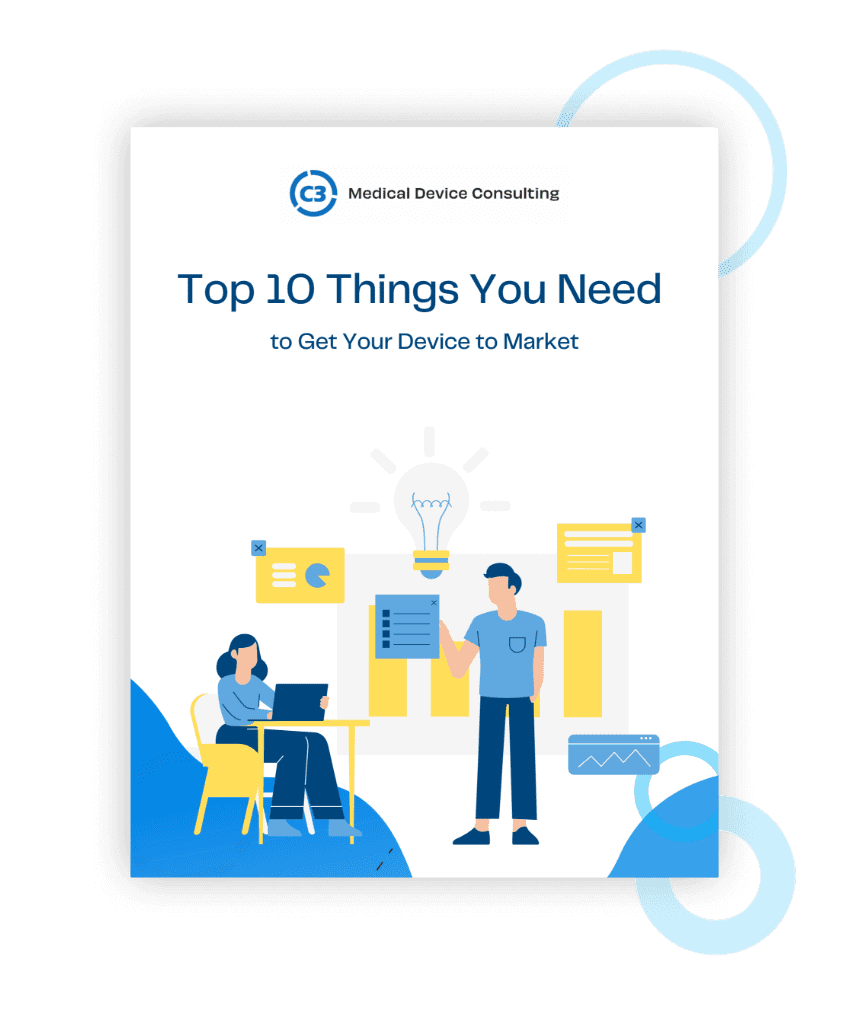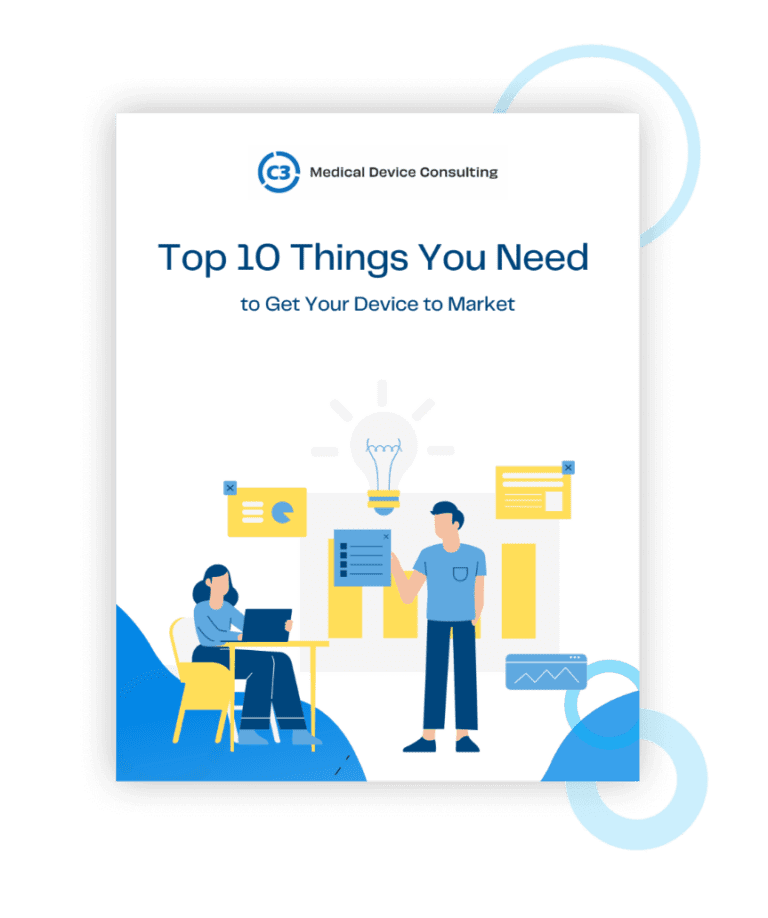As you probably know, bringing a new device to market is a massive undertaking that involves product ideation and development, testing (and sometimes clinical trials and other research), marketing, and responding to user feedback.
There are plenty of areas for setbacks or errors, especially when it comes to ensuring your device is in compliance with FDA regulations, and whether or not they even apply to your device. Here we’ll look at what you need to know to minimize the risks and stay aware of possible pitfalls. We’ll also look at some examples of issues the FDA has found with three recent devices.
Classification compliance
Even with a solid team of designers, researchers, engineers, and leadership your project and your company are not immune to missteps. One of the biggest is determining if the device is a medical or wellness device based on FDA guidelines and interpretations. If the FDA finds your device has been misclassified it can affect design and manufacturing as well as marketing and distribution (or even risk a device recall).
The best way to minimize or prevent regulatory challenges is to learn the difference between medical and wellness device classifications based on the FDA’s definitions. This includes, but is not limited to, defining the device’s intended use, functionality, and claims you plan to make about it (learn more in detail here).
Software savvy
Medical devices that use software or an app may be subject to complex requirements for testing and validation. The two primary categories of software are:
- SaMD – Software as a medical device, in which the software is used for medical purposes and is not part of the hardware, for example image processing software
- SiMD – Software in a medical device, in which the software helps to run the hardware in a device, often called embedded software or firmware, for example software that controls the movement of an imaging machine
Both are subject to FDA regulations and the FDA’s policy on software is available here.
Further, the question of wellness vs. medical device classification applies to some types of software. For example, clinical decision support (CDS) software can be considered a device or a non-device depending on how it works. “CDS software must support or provide recommendations to health care providers as they make clinical decisions, but the software cannot be intended to replace a provider’s independent judgment. That is, the software can inform decisions, but it cannot be intended as the driving factor behind them. Otherwise, the software must be regulated as a medical device by the agency,“ according to the Pew Charitable Trusts. The article also notes some types of software are exempted from regulation.
The cloud and cybersecurity
Regulations, validation, and cybersecurity risk assessment requirements may also apply to any third party or off-the-shelf software used with or in a device, as explained here.
Third party software applications and data stored in the cloud are subject to push updates, often without prior notice. This can make it difficult to validate if the software is functioning correctly, and nearly impossible to determine that validation is truly complete.
“In general, each time a manufacturer significantly updates the software or makes other changes that would substantially affect the device’s performance, the device may be subject to additional review by FDA, although the process for this evaluation differs depending on the device’s risk classification and the nature of the change,” notes Pew.
What’s more, in today’s interconnected computing environment, any “smart,” wi-fi, or internet enabled device is vulnerable to cyber attack and needs to include a plan for safeguarding data and functionality. This adds a layer of complexity and time to the device development process.
As a best practice for cloud computing and cybersecurity concerns, consider building a schedule for recurring, periodic testing and validation into your ongoing device management and support.
Inspection readiness
Class II and III medical devices are subject to biennial inspection by the FDA. This includes contract manufacturers, design specification developers, repackagers, and contract sterilizers as well as the primary device developer. Some “high risk” class I devices are also inspected.
It’s important to know what the FDA is looking for during inspections, and that the FDA often issues warning letters after inspections. Your quality systems and specifically your operating procedures are things the FDA scrutinizes during inspection; therefore, it’s important to have them documented thoroughly, ingrained in your company culture, and followed routinely. If your operating procedures are found to be inadequate or missing, a warning letter will likely be issued.
You can learn more about the inspection process and some real-world pro tips from the FDA here.
FDA feedback: The warning letter
The Center for Devices and Radiological Health, an office of the FDA, issues warning letters to companies found to be in serious violation of the Food, drug, and cosmetic act (FDCA). Letters are often sent following an FDA inspection that reveals regulatory violations. However, the FDA may also issue a letter after learning of wellness or other devices that raise questions about intended vs. actual use, marketing claims, functionality, and other issues.
Letters require a response within 15 days and should include a clear explanation of:
- steps taken to correct violations,
- plans to avoid violations in the future,
- documentation for all steps, and
- timeline for changes if they will happen over time, or
- reasoning for why they disagree with FDA findings
All FDA warning letters are public information and can be found online by searching for letters issued by the Center for Devices and Radiological Health.
These recent examples illustrate some, but certainly not all, of the things the FDA may take issue with:
- Owlet Baby Care, Inc. An FDA warning letter was issued for a wearable infant monitor marketed as a wellness device. The FDA found that the monitor is correctly classified as a medical device, stating “products that measure blood oxygen saturation and pulse rate are devices when they are intended to identify (diagnose) desaturation and bradycardia and provide an alarm to notify users that measurements are outside preset values.”
- SurgiSil, LLP. The FDA issued a warning letter for SurgiSil’s Perma Facial implant device. According to Med Tech Dive, “SurgiSil was marketing the Perma Facial device for lip augmentation, a use for which it is not indicated, making the device adulterated….Regulators asked the company to cease commercial distribution of the Perma Lip device and to stop marketing the Perma Facial device as a lip implant. The agency also instructed Surgisil to remove from its website a statement saying that the agency has approved the Perma Facial device, and warned that failure to correct the violations could result in seizure, injunction and monetary penalties.“
- iRhythm Technologies. A warning letter was issued for the Zio AT heart monitoring system regarding it’s marketing claims. While the device was indicated for adults who are non-critical for arrythmia, the FDA found iRhythm’s marketing materials and website implied the device was intended for high-risk patients by claiming it could provide ‘near real-time reporting’ and ‘high-risk,’ instead of non-critical care. Further, FDA noted “this change could significantly affect the safety or effectiveness of the device because it suggests that the device is intended for a new patient population – high-risk patients,” according to an article from Regulatory Focus.
The letter also points out software regulation violations and iRhythm’s failure to properly report patient deaths related to the monitoring device.
Less risk, more progress with C3 Medical
While it’s impossible to avoid all run into delays, design challenges, or regulatory questions, having an experienced guide at your side can make it easier to navigate the inevitable twists and turns. At C3 Medical our team of designers, engineers, and medical and healthcare experts are ready to help you stay informed as you bring your device to market – please contact us to learn more!










